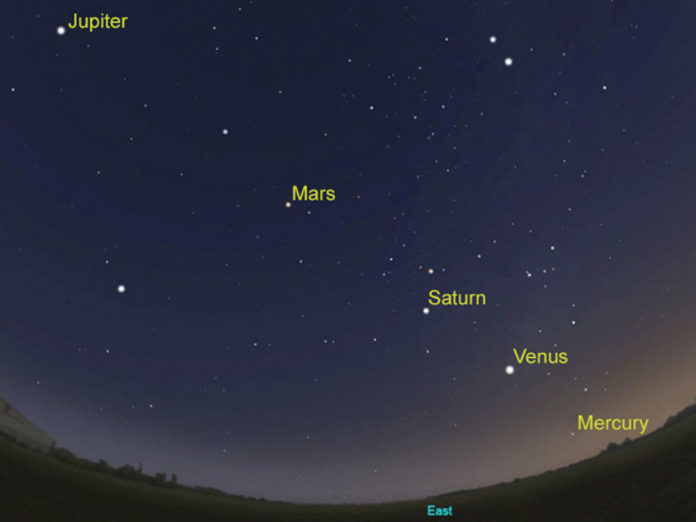Five planets will be visible in the predawn sky this weekend, offering an opportunity for sky watchers to see a rare alignment of Mercury, Venus, Mars, Jupiter and Saturn with the naked eye.
Beginning Friday and lasting through this month, the five planets will appear strung across the eastern horizon before sunrise. The parade of planets will be aligned in order of their distance from the sun, with Mercury, closest to the star, appearing lowest on the horizon and Saturn highest in the night sky.
For the best views of the five planets alignment, sky watchers in the Northern Hemisphere should head outside roughly 30 minutes before sunrise and choose a spot with unobstructed views of the eastern and southeastern horizon.
The same five planets are viewable before sunrise in the Southern Hemisphere, but stargazers there should stake out a location with unobstructed views of the eastern and northeastern horizon, instead.
If conditions are clear, the planets should be bright enough to see them with the naked eye, though Mercury will be faintest early in the month and thus trickiest to spot without binoculars.
Later in the month, however, Mercury will brighten significantly and appear higher in the sky, making it much easier to see, according to Sky & Telescope, a publication by the American Astronomical Society.
A separate treat also awaits sky watchers later in the month: On June 24, the crescent moon will sneak into the predawn lineup, appearing between Venus and Mars.
While it’s fairly common to see two planets appear close together in the night sky — a celestial phenomenon known as a conjunction — it’s much rarer for a planetary quintet to line up in their natural order. The last time five planets visible to the naked eye were aligned this way was in December 2004, according to Sky & Telescope.
After June, however, the party will begin to break up.
As the next few months progress, Saturn, Mars, Jupiter and Venus will appear more spread out in the predawn sky, “so much so that Venus and Saturn will make their exits as morning objects for most observers by September,” according to NASA.










